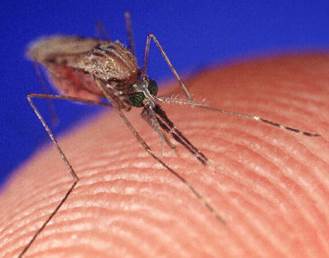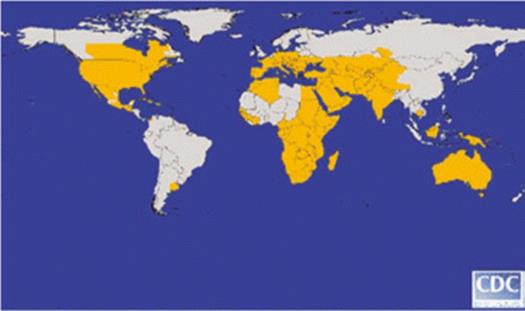Authors:
Caroline Yang, Boston University
Sarah Esselborn, Boston University
Shannon Linderman, Boston University
Valorie Richards, Boston University
Kimberly Barrett, Boston University
Introduction
RK: I think it's nice that you linked out to alot of external resources, but I would have liked to have seen you weave relevant pieces of information throughout your content. The intended audience is your fellow public health practitioners and I think there the style of the module is more geared towards a general audience….not necessarily professionals in the field.
I would have also liked the different sections to flow a little better into each other, and it would have been nice to have a conclusion page to wrap up the module at the end.
Contrary to what their names suggest, West Nile Virus (WNV) and Eastern Equine Encephalitis (EEE) are not exclusively constrained to a specific geographic area, but are pathological viruses that are endemic to many regions of the world. Both are neuro-invasive viruses with similar structure and transmission mechanisms that vary slightly in symptom presentation and areas where prevalent. Therefore, it is important to understand the differences between these viruses, while appreciating their similarities when considering public health control measures that could be used to protect large populations from these viruses and their potentially devastating health effects.

Figure 1: A mosquito acting as a possible vector for WNV. (http://science.howstuffworks.com/zoology/insects-arachnids/mosquito.htm)

Figure 2: Global distribution of WNV in 2006. (http://cid.oxfordjournals.org/content/45/8/1039.long)
Learning Objectives:
After successful completion of this section, the student or entry-level professional will be able to:
1. Define arbovirus and describe the most common reservoir and vector for WNV and EEE
2. Describe the transmission cycle of WNV and EEE
3. Understand factors that contribute to risk of infection
4. Describe the disease impact on humans
5. Discuss evidence-based strategies for prevention of WNV and EEE
6. Discuss the problem with the use of pesticides
7. Provide examples of interventions at each level
8. Differentiate between the possible interventions that could be done at different levels (resident vs. state)
9. Identify the problem with aerial sprays
10. Provide examples of surveillance of WNV and EEE
